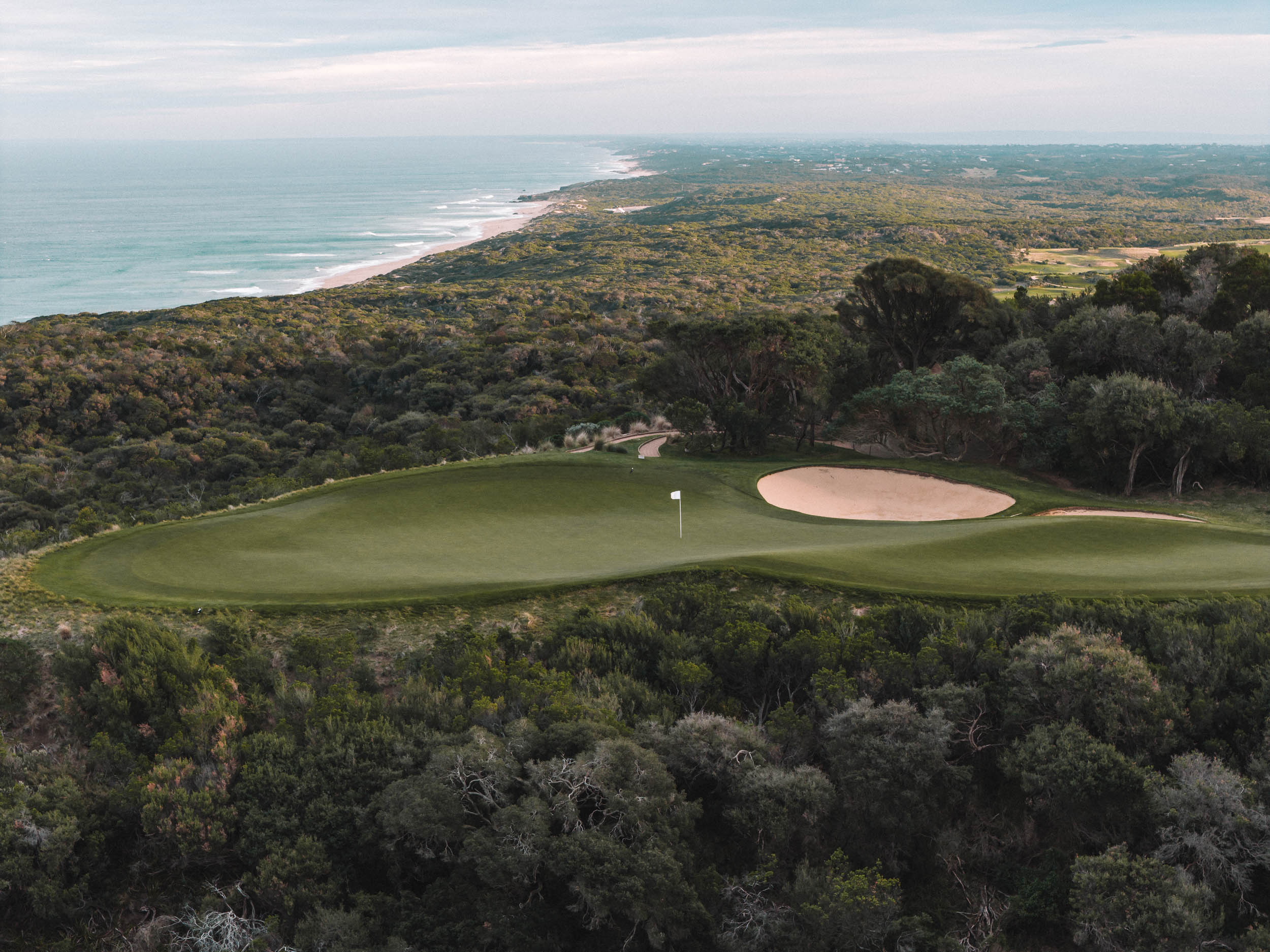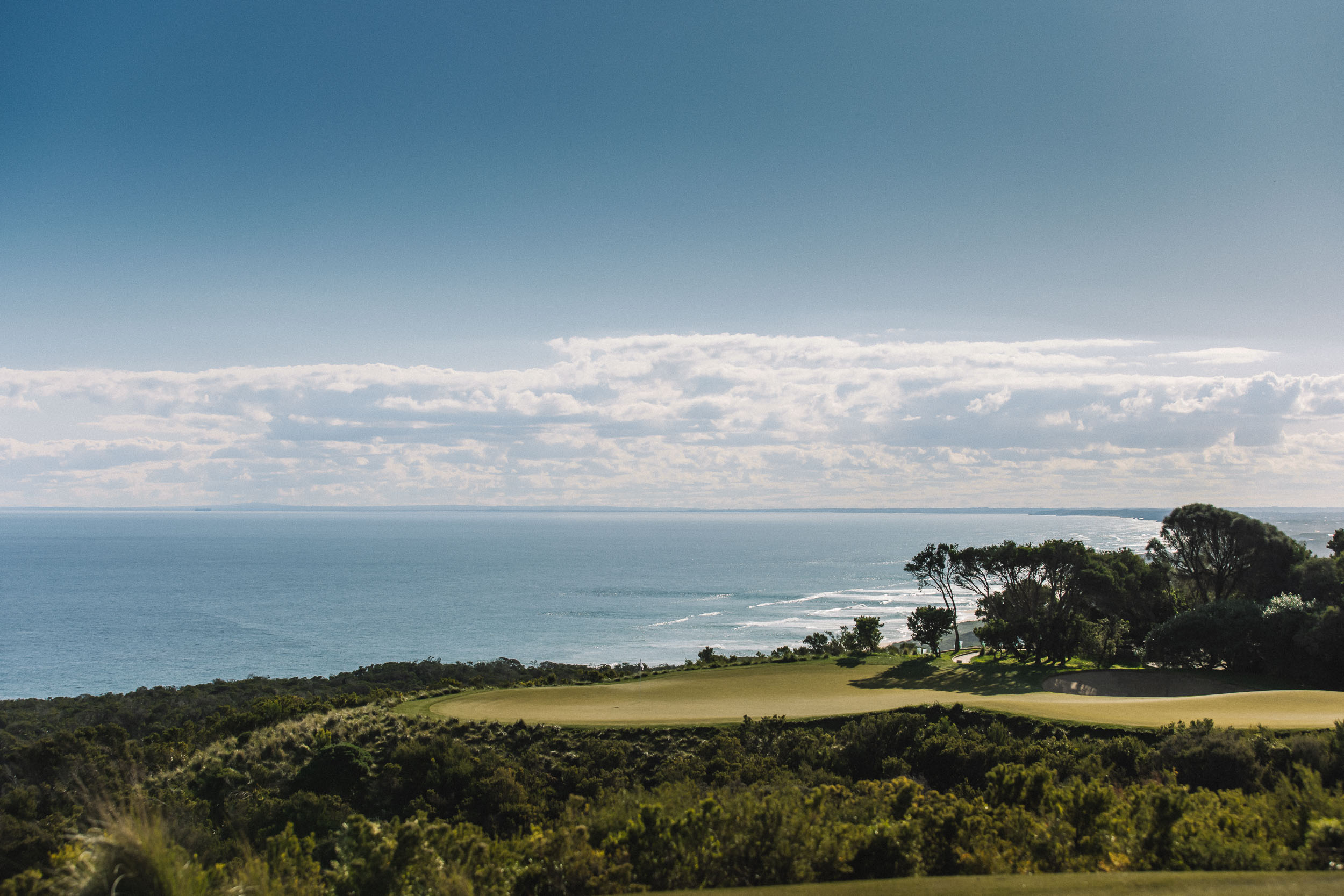The National Journal Presents
Seventh Heaven
Standing on Golf's Most Beautiful Stage - The 7th on The Old Course
Photographed and written by William Watt
There’s a moment on every great golf course where you stop walking and just… stare.
Standing there, 80 metres above Bass Strait, you’re confronted with what might be Australia’s most spectacular golfing backdrop. The view stretches all the way to Portsea and even across to Queenscliff on a clear day, with the ragged southern coast of the Mornington Peninsula rolling away beyond the hole.
The wind is almost always in your face. The ravine below seems to swallow golf balls for breakfast. And somewhere beyond that green, the Southern Ocean crashes against the coast with the kind of raw power, or occasionally a serene calm that makes you remember just how small you really are.
“Any golf course architect would kill for a piece of land like this,” Robert Trent Jones Jr. once said about this property. “It is one of the most unique areas of links country left anywhere in the world.”
He wasn’t exaggerating.
But here’s the thing that might surprise you: this hole that now serves as the talking point of the front nine wasn’t always the 7th hole at all.
When RTJ Jr.’s creation first opened in 1988, what we now know as the signature 7th was actually the 2nd hole. The original clubhouse sat behind what is now the 6th tee, meaning golfers faced this heart-in-mouth test almost immediately after leaving the first tee.
Imagine that for a moment.
You’ve barely had time to loosen up, barely gauged the wind, barely found your rhythm -and suddenly you’re standing over a shot that demands absolute precision with that jaw-dropping backdrop making your knees weak. This was a hole that could destroy your scorecard before you had even warmed up.


The transformation came in 2000 when The National expanded to become Australia’s premier 54-hole facility. As Jones himself recalls: “They changed the numbering pattern when they changed the clubhouse, and I think the hole sits more comfortably in the routing now.” The former 2nd hole became the 7th, fundamentally changing not just its position in the round, but its entire psychological impact.
Now, standing on that tee as the 7th hole, you’ve had six holes to prepare. Six holes to read the wind. Six holes to find your tempo and settle your nerves. And six holes where the 7th is inexorably growing in the back of your mind.
For RTJ2, he felt he was hitting his stride at the point in his career when he designed The Old. As he puts it: “I was in what I would call, in the ’80s and ’90s, and even in 2000s, in my very strong period. I was working all over the world on some truly incredible projects. When I was working in Australia, you guys like to play from the back tees. So I said, ‘Okay, let’s go. Let’s give them real Beethoven music here.’ The National is tougher than Beethoven’s 5th.”
The 7th hole itself remains as demanding as ever. Club selection can vary wildly depending on the wind. Members have tales of hitting everything from a sand wedge to a 3-iron on the same hole, sometimes even on the same weekend.
The single bunker Jones designed isn’t there by accident. “I like to use bunkers as kind of a reflection of the ocean when I’m near the ocean,” he explains. “And so you see the whiteness in the distance as the waves crash into the shore, and a hint of whiteness again on the lip of bunker.” His goal was to create a visual harmony where the different elements don’t compete for attention, and to make the hole feel complete.
The green, while almost 80 metres wide, is only a few metres deep – meaning anything short, long, or wide disappears into the scrub faster than your playing partners can say “provie” or “that’s dead.”
Seventh Heaven w/ RTJ2
The spine running through the middle of the green can be your best friend or your worst enemy. Get on the wrong side of it, and you’re looking at a potential three-putt. Find the correct side, and you’re immediately thinking of the chance of a memorable birdie.
For those lacking the confidence to attack the pin, there’s a bailout area to the right of the green. It’s not exactly generous, but it’s there – a small mercy on a hole that demands respect.
The most challenging pin position actually sits on the narrower, less spectacular right side of the green, where the rear bunker comes more into play with anything hit with too much conviction.
Jones understood something fundamental about golf course design when he crafted this hole. “When you have great land, you don’t need to spend money,” he reflects. “You do the opposite. You try to do less to it.” Rather than imposing an artificial challenge, he allowed the natural ravine and coastal setting to dictate the hole’s character. The result feels inevitable, as if this green had always been waiting among the tea trees and coastal scrub for someone to discover it.
He also grasped the importance of pacing within a round. “When you play 18 holes of golf, you’re there for a minimum of four hours, maybe longer,” he notes. “And intimacy is part of the symphony. Think of symphonic work. It’s not all rock music. It’s not Beethoven, da, da, da, all the time. There’s some general phrases of music in a classical symphony… where it gives you time to breathe, to take it all before another peak.”
The 7th hole represents one of those peaks – a moment where the symphony reaches crescendo.


But let’s be honest: half the battle with this hole is simply staying composed while standing on that tee. Looking out over the ravine toward that spectacular coastal panorama, with the wind tugging at your shirt and the sound of waves far below, it’s the kind of moment that reminds you why you fell in love with this game in the first place.
Nearly four decades after it opened, the hole continues to create stories and, these days, flood instagram feeds.
Stories of balls donated to the ravine when nerves get the better of technique.
Stories of hole-in-ones, when the wind drops and everything aligns.
And stories of golfers who, regardless of the outcome, walk away from that green feeling like they’ve experienced something special.
Whether you’ve just made birdie or are reaching for your provisional ball, the 7th at The National Old Course leaves every golfer with the same feeling: a mixture of respect, awe, and an overwhelming desire to return.


